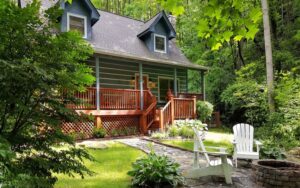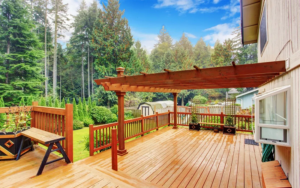
Step-by-Step Tutorial: How to Build Your Own Wooden Mirror Frame
Ever look at a plain mirror and think, “it needs a little something extra”? Well, unleash your inner artist and build your own wooden frame! It’s a surprisingly achievable project that adds a personal touch to your decor and saves you money compared to buying a pre-made frame.
This step-by-step guide will walk you through the process of building a beautiful wooden mirror frame, even if you’re a DIY beginner. So, grab your tools, unleash your creativity, and get ready to transform that mirror!
Before We Begin: Gather Your Supplies
Here’s what you’ll need:
- Wood:
- Choose a type of wood that complements your existing furniture or your desired aesthetic. Popular options include pine, poplar, or oak.
- You’ll need enough wood to create four pieces of equal length for the frame (the length will depend on the size of your mirror). The width and thickness can vary depending on your preference, but a good starting point is 1.5 inches wide and 0.75 inches thick.
- Mirror: Ensure the mirror is the same size or slightly smaller than the wood you purchased.
- Wood saw: Miter saw for precise cuts or a circular saw for a more budget-friendly option.
- Sandpaper: Different grits (around 120 and 220) for smoothing rough edges.
- Wood glue: Strong wood glue suitable for the type of wood you’re using.
- Clamps: Several clamps to hold the frame pieces together while the glue dries.
- Wood stain (optional): Choose a stain that complements your decor or the natural wood tone.
- Paint (optional): If you prefer a painted frame, select a paint suitable for wood and the desired color.
- Paintbrush or roller (optional): Depending on your chosen paint application method.
- Clear topcoat (optional): Protects the stain or paint and adds a nice finish.
- Screws (optional): For added stability, especially for larger or heavier mirrors.
- Screwdriver: If using screws.
- Drill (optional): If using screws for added stability.
- Tape measure: To ensure accurate measurements.
- Pencil: To mark cutting lines.
- Safety glasses: Always wear safety glasses when using power tools.
- Optional finishing touches: Depending on your desired style, you can add decorative elements like molding, trim, or metal accents.
Let’s Get Building!
1. Measure and Cut:
- Measure twice, cut once! Carefully measure the mirror to determine the length of each frame piece. Remember to account for the width of the wood when calculating the final dimensions of the frame.
- Using your saw, cut the wood pieces according to your measurements. Ideally, for a professional look, aim for 45-degree angle cuts at the ends of each piece to create a seamless corner. A miter saw will make these cuts easier, however, a circular saw can be used with a little more effort.
Pro Tip: If you’re not confident with angled cuts, you can simply create a square frame by cutting the ends straight.
2. Sanding Smoothness:
- Use sandpaper (starting with a rougher grit like 120 and then progressing to a finer grit like 220) to sand down any rough edges or imperfections on the cut wood pieces. This ensures a smooth and professional finish.
3. Joinery Magic (Optional):
This step is optional but can add strength and stability to your frame, especially for larger mirrors. Here are two methods:
- Pocket Holes: Using a Kreg Jig or similar pocket hole jig, you can drill angled pocket holes into the ends of the frame pieces. These holes will then be hidden by the wood when assembled. Pocket screws are then used to securely join the pieces together.
- Dowel Joints: Drill corresponding holes in the ends of the frame pieces and insert pre-cut dowel rods. Wood glue is then applied, and the pieces are clamped together until dry.
4. Gluing and Clamping:
- Apply a generous amount of wood glue to the joining surfaces of the frame pieces.
- Carefully position the pieces together to create the frame, ensuring the corners are flush.
- Use clamps to hold the pieces firmly in place while the glue dries completely. Refer to the drying time recommended on your chosen wood glue.
5. Optional: Staining or Painting
- If you prefer the natural look of the wood, you can skip this step.
- For a stained finish, choose a stain that complements your decor or the natural wood tone. Apply the stain with a rag or brush, following the grain of the wood. Allow the stain to dry completely according to the manufacturer’s instructions. You may need to apply additional coats for a richer color.
- If you prefer a painted frame, select a paint suitable for wood and your desired color. Apply the paint with a brush or roller, ensuring even coverage. Again, refer to the drying times on the paint can and apply additional coats if needed.
6. Sealing the Deal (Optional):
- To protect your stained or painted frame and add a nice finished look, apply a clear topcoat. Choose a matte, satin, or gloss finish depending on your desired aesthetic. Follow the application and drying instructions on the chosen topcoat product.
7. Mirror, Mirror, on the Wall…
- Once your frame is completely dry (including stain, paint, and topcoat if used), it’s time to attach the mirror!
8. Hang it Up!
- Choose appropriate wall hanging hardware based on the weight of your mirror and frame. Install the hardware securely on your wall according to the manufacturer’s instructions.
- Carefully lift your finished mirror and hang it on the mounted hardware.
Final Thoughts
You’ve built your very own beautiful and unique wooden mirror frame. Stand back and admire your handiwork! So unleash your inner carpenter, grab your tools, and get ready to create a stunning addition to your home!


